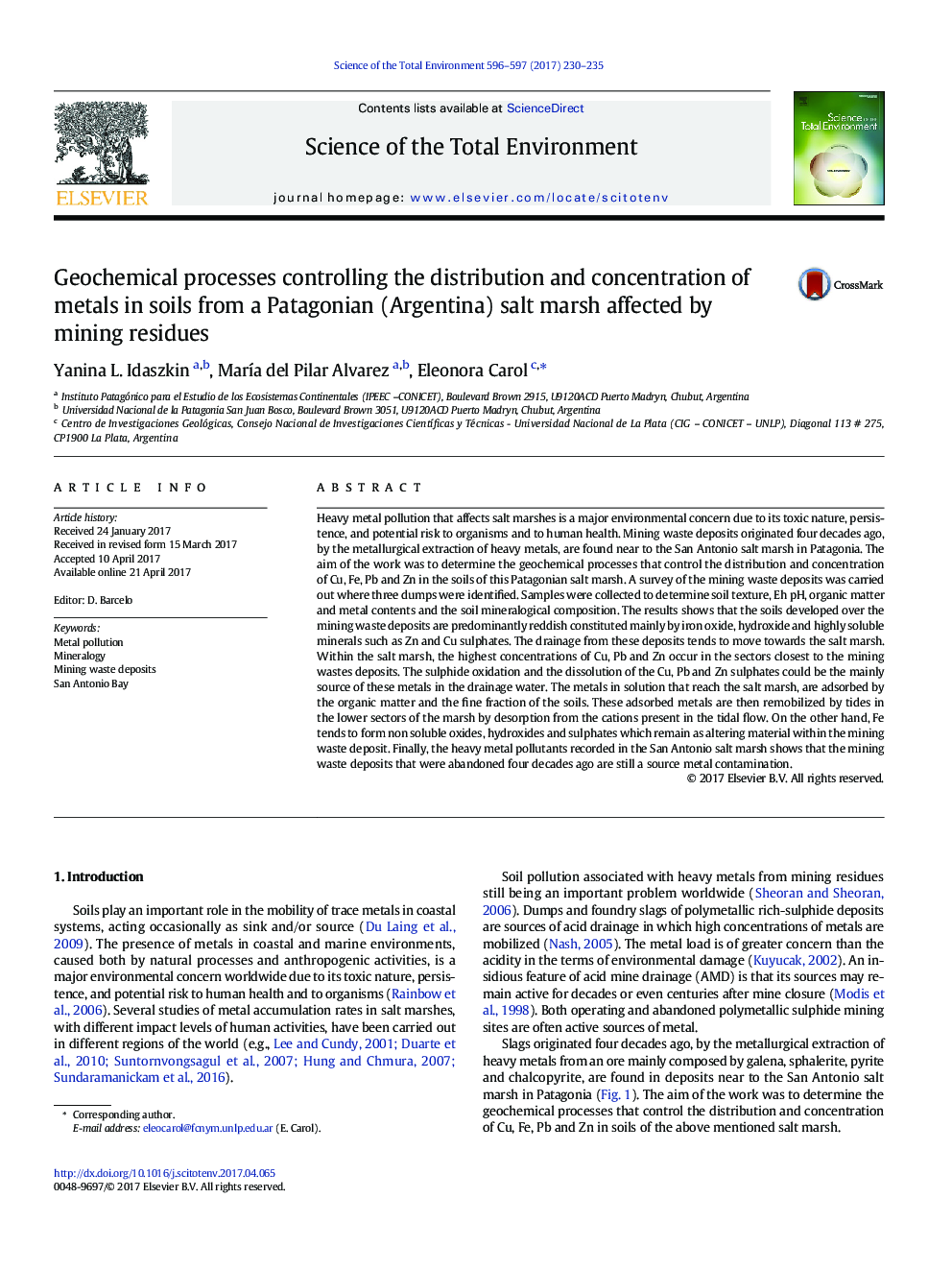| کد مقاله | کد نشریه | سال انتشار | مقاله انگلیسی | نسخه تمام متن |
|---|---|---|---|---|
| 5750693 | 1619700 | 2017 | 6 صفحه PDF | دانلود رایگان |
Heavy metal pollution that affects salt marshes is a major environmental concern due to its toxic nature, persistence, and potential risk to organisms and to human health. Mining waste deposits originated four decades ago, by the metallurgical extraction of heavy metals, are found near to the San Antonio salt marsh in Patagonia. The aim of the work was to determine the geochemical processes that control the distribution and concentration of Cu, Fe, Pb and Zn in the soils of this Patagonian salt marsh. A survey of the mining waste deposits was carried out where three dumps were identified. Samples were collected to determine soil texture, Eh pH, organic matter and metal contents and the soil mineralogical composition. The results shows that the soils developed over the mining waste deposits are predominantly reddish constituted mainly by iron oxide, hydroxide and highly soluble minerals such as Zn and Cu sulphates. The drainage from these deposits tends to move towards the salt marsh. Within the salt marsh, the highest concentrations of Cu, Pb and Zn occur in the sectors closest to the mining wastes deposits. The sulphide oxidation and the dissolution of the Cu, Pb and Zn sulphates could be the mainly source of these metals in the drainage water. The metals in solution that reach the salt marsh, are adsorbed by the organic matter and the fine fraction of the soils. These adsorbed metals are then remobilized by tides in the lower sectors of the marsh by desorption from the cations present in the tidal flow. On the other hand, Fe tends to form non soluble oxides, hydroxides and sulphates which remain as altering material within the mining waste deposit. Finally, the heavy metal pollutants recorded in the San Antonio salt marsh shows that the mining waste deposits that were abandoned four decades ago are still a source metal contamination.
Journal: Science of The Total Environment - Volumes 596â597, 15 October 2017, Pages 230-235
